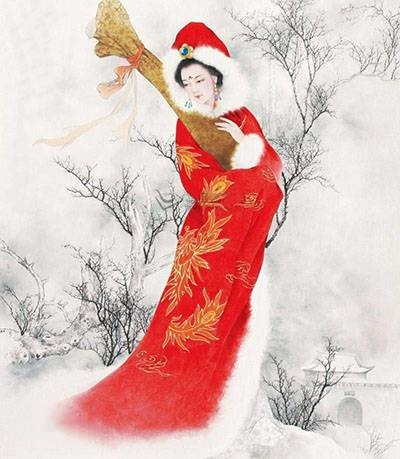The Story of Wang Zhaojun and the Pipa
Since ancient times, Wang Zhaojun in literary and artistic works has always accompanied the pipa. However, Zhaojun, who is commonly seen in modern dramas, paintings, sculptures and other artistic images, is accompanied by a half-pear-shaped pipa that came only four hundred years later than her, which is inconsistent with historical facts.

During the reign of Emperor Wu of the Han Dynasty (140 BC-87 BC), there were round speakers and straight-necked musical instruments similar to the modern "Ruan". ) are called pipa in the literature. About 350 AD, the half-pear-shaped curved-neck musical instrument introduced to China from India is also called the pipa. In order to distinguish, people call the former the Han Pipa and the latter the curved-neck Pipa. The sources, shapes and characteristics of the two lutes are completely different.
Han pipa: round speaker, straight handle, Chengqi era is 15 BC, this theory is proved by Boxuan's "Pipa Fu·Preface" from the Western Jin Dynasty. The Preface of the Pipa Fu says: "I heard the old saying: The Han sent Princess Wusun to marry Kunmi, reciting her longing for her practice, and making the workers acquainted with each other, cut the qin, zheng, zhu, and konghou, and make the music on horseback. Look at its utensils: the middle is empty and the outer is solid, the image of heaven and earth; the round handle is straight, the yin and yang are described; the pillars have twelve and twelve, and the Jin Lu is also equipped; Easy to pass on to foreign masters." This kind of pipa with a round speaker, straight handle, four strings and twelve frets was later called "Han Pipa", and it was called "Ruan Xian" in the Tang Dynasty, and is now commonly known as "Ruan".
Curved-neck pipa: Half-pear-shaped sound box, curved neck, with four columns and four strings on the neck. Because its head is bent backwards, it is called the curved-neck pipa. It is also called Qiuci Pipa because it passed through Qiuci. This kind of pipa was introduced into northern China from India around 350 AD, and then spread to the south around 551 AD.
It can be seen that the Han pipa preceded the curved-neck pipa by more than 400 years. Zhaojun lived in the Yuandi period of the Western Han Dynasty (48 BC-33 BC), and it was impossible to carry a curved-neck pipa that was more than 400 years later than her. Therefore, the pipa at that time should be the round pipa described by Fu Xuan. The Han Pipa with a straight handle is like the current "Ruan" musical instrument.
 渝公网安备 50010702504639号
渝公网安备 50010702504639号